Type Rapid Transit Opened April 1967 Status Scrap | Stations 6 Closed October 1972 | |
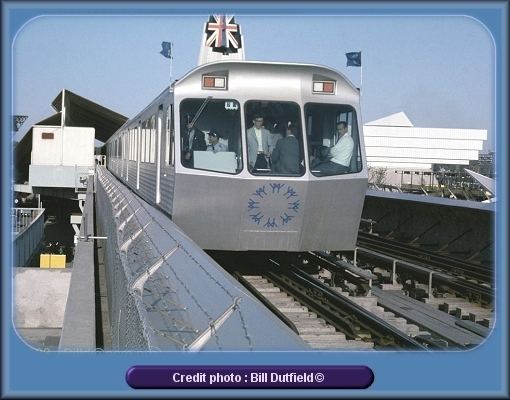 | ||
Termini Place d’AccueilLa Ronde | ||
Tournee de l expo 67 par l expo express
The Expo Express was a rapid transit system consisting of five stations and a 5.7-kilometre (3.5 mi) route, running from Cité du Havre to Notre Dame Island in Montreal, Quebec, Canada. Built for the 1967 World's Fair Expo 67 at a cost of around CAD$18 million, the trains carried 1,000 passengers each and ran approximately every five minutes.
Contents
- Tournee de l expo 67 par l expo express
- Ama expo express east rotor road heli multirotor fpv
- Vehicles
- Background
- Route
- History
- References
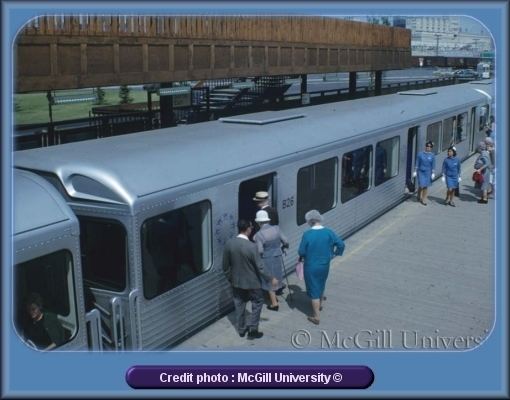
In 1968 the cars were sold to the City of Montreal for $1.8 million and operated by the Montreal Transit Commission (now the STM). The train remained in service for five more years (summer only), however, from 1969 onward, on a shortened route when the terminus was cut back to Saint Helen's Island. After the 1972 season the service was withdrawn.
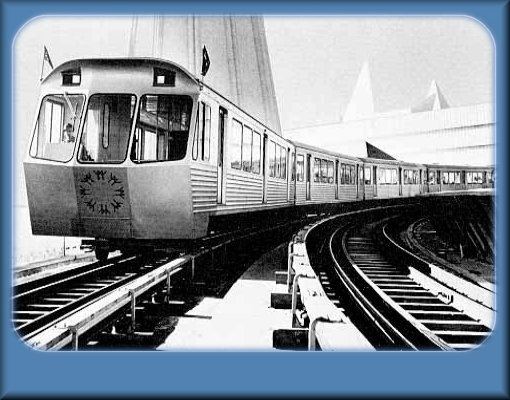
Ama expo express east rotor road heli multirotor fpv
Vehicles

Not to be confused with the Minirail monorail which ran within the perimeters of the Expo Site, the Expo Express used standard railway technology, with two running rails and a third electrified rail identical to those of the Toronto subway. In fact, the trains used were a modified version of the Hawker Siddeley H-series used by the Toronto Transit Commission with one fewer door on each side, and streamlined ends. Consequently, unlike Montreal's Metro with rubber tires, the Expo Express used traditional steel-wheeled trains. The Expo Express also featured fully air conditioned passengers cars, whereas Montreal's Metro does not.
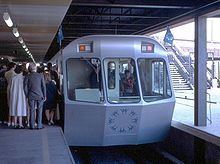
In 1968 the New York City Transit Authority looked into the feasibility of modifying the cars for use on the Staten Island Railway, but this plan never came to fruition.
Background
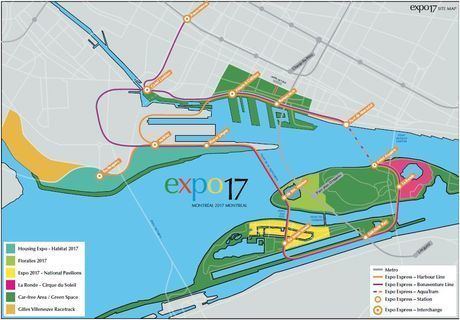
The Expo Express was the first fully automated rapid transit system in North America, utilizing an Automatic Train Operation (ATO) system based on audio frequency track circuits furnished by the Union Switch & Signal division of Westinghouse Air Brake Company. This fact, however, was not widely publicized during the fair, as it was felt the public would not readily board a train controlled entirely by a computer. Operators from Montreal's transit union were placed in cabs at the front and given mundane tasks such as opening and closing the doors of the train to reduce boredom.
This resulted in a minor incident during the fair, at La Ronde station. The conductor had pressed the button to close the doors and proceed, but his train had already sensed an oncoming express from Notre Dame Island and automatically delayed the go command to let it roll in. In the meantime, the driver realized he had forgotten his lunch. However, he could not exit though the passenger doors because his train was in a "wait" state and would not allow the doors to open. Instead, he crawled through the small cab window. By the time he had fetched his lunch, however, the oncoming train had pulled in and his train had taken off on its own. It crossed the bridge over the Le Moyne Channel, proceeded along the seaway, and came to a smooth stop at Notre Dame Island station where an Expo official was waiting. This person crawled back through the cab window and pressed the button to open the doors and let the passengers disembark.
Route
The line was double-track throughout, except for a single-track section at Cité du Havre, where people exited on one side of the train and boarded on the other. Maintenance facilities were located northwest of La Ronde station.
When the terminus was cut back to Saint Helen's Island in 1969 (Cite du Havre line closed), it was single-tracked as well. In 1969 a new station, near Man the Provider, was opened on Notre Dame Island. In 1972 the two stations on Notre Dame Island closed, making the route direct from Saint Helen's to La Ronde with no stops in between.
The line was dismantled north of Notre Dame Island in 1974 for the construction of the Olympic basin; rolling stock was moved to the Concorde bridge between Notre Dame and Saint Helen's Island and stored there until 1979.
History
The Expo Express ran from April 1967 to October 1972 (one year after the section of Man and his World on Notre Dame Island section closed to the public). During the early years of Man and His World, 1968-1972, the Express ran for two months each year. With service discontinued, in 1973 the trains were put in storage on the Concorde Bridge between Saint Helen's and Notre Dame Islands. The north end of the line was demolished in 1974. In the summer of 1979 they were moved again, to the Port of Montreal via a temporary track, and stored at the nearby CN Point St-Charles Shops.
After several unrealized schemes including a reported sale to the New Jersey Sports and Exposition Authority, the cars they were moved from Point St-Charles to an outdoor field storage facility in Les Cèdres in the late 1980s, and were scrapped in the mid-1990s.
Virtually nothing remains of the Expo Express. The only visible evidence is at La Ronde, where a train bridge sits deteriorating in the middle the river and remnants of the La Ronde station have been converted into the main entrance for the amusement park. The area where Place d'Accueil stood is now a parking lot, and part of the track route is a paved bicycle path.
